-
 Bitcoin
Bitcoin $99,594.2189
-3.59% -
 Ethereum
Ethereum $2,188.5793
-9.00% -
 Tether USDt
Tether USDt $1.0001
-0.02% -
 XRP
XRP $1.9745
-5.82% -
 BNB
BNB $608.9511
-3.73% -
 Solana
Solana $130.4575
-5.93% -
 USDC
USDC $1.0000
0.01% -
 TRON
TRON $0.2637
-3.59% -
 Dogecoin
Dogecoin $0.1493
-5.97% -
 Cardano
Cardano $0.5322
-6.72% -
 Hyperliquid
Hyperliquid $33.9044
3.33% -
 Bitcoin Cash
Bitcoin Cash $449.6411
-5.46% -
 UNUS SED LEO
UNUS SED LEO $8.9629
0.43% -
 Sui
Sui $2.3943
-8.35% -
 Chainlink
Chainlink $11.4402
-7.83% -
 Stellar
Stellar $0.2241
-6.49% -
 Avalanche
Avalanche $16.1489
-4.24% -
 Toncoin
Toncoin $2.7182
-5.94% -
 Shiba Inu
Shiba Inu $0.0...01040
-5.72% -
 Litecoin
Litecoin $78.7882
-4.07% -
 Ethena USDe
Ethena USDe $1.0004
-0.01% -
 Hedera
Hedera $0.1305
-7.45% -
 Monero
Monero $297.0030
-5.32% -
 Dai
Dai $0.9997
-0.02% -
 Polkadot
Polkadot $3.1834
-6.03% -
 Bitget Token
Bitget Token $3.9788
-7.03% -
 Uniswap
Uniswap $6.1327
-10.62% -
 Pepe
Pepe $0.0...08689
-8.30% -
 Pi
Pi $0.4826
-9.65% -
 Aave
Aave $219.8043
-9.69%
How to confirm KDJ in a breakthrough market? How to identify a false breakthrough?
The KDJ indicator, crucial for crypto trading, helps identify reversals and confirm signals in breakthrough markets, but distinguishing false breakthroughs is key for success.
May 24, 2025 at 01:15 pm
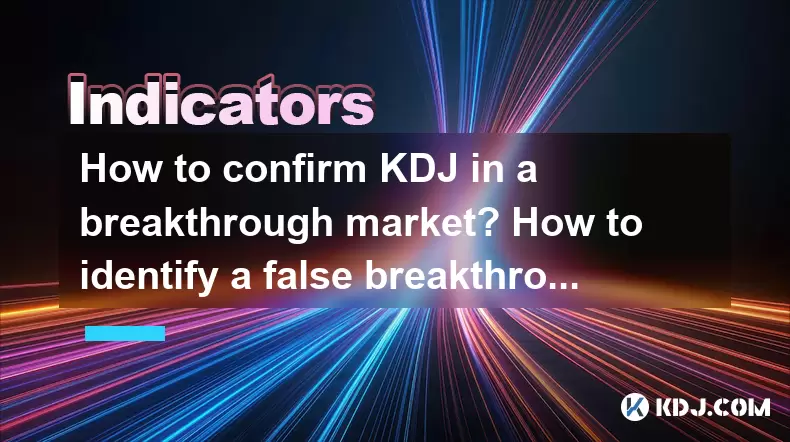
In the world of cryptocurrency trading, technical analysis tools like the KDJ indicator play a crucial role in helping traders make informed decisions, especially during breakthrough markets. The KDJ indicator, also known as the Stochastic Oscillator, is a momentum indicator that can help traders identify potential reversals and overbought or oversold conditions. However, understanding how to confirm KDJ signals in a breakthrough market and distinguishing them from false breakthroughs is essential for successful trading. This article will delve into these topics, providing detailed guidance on how to use the KDJ indicator effectively.
Understanding the KDJ Indicator
The KDJ indicator is composed of three lines: the K line, the D line, and the J line. The K line represents the fast-moving average of the stochastic oscillator, the D line represents the slow-moving average, and the J line is derived from the K and D lines. The KDJ indicator oscillates between 0 and 100, with readings above 80 indicating overbought conditions and readings below 20 indicating oversold conditions.
To use the KDJ indicator effectively, traders typically look for crossovers between the K and D lines. A bullish signal occurs when the K line crosses above the D line, suggesting that the market momentum is shifting upwards. Conversely, a bearish signal is generated when the K line crosses below the D line, indicating a potential downward shift in market momentum.
Confirming KDJ Signals in a Breakthrough Market
In a breakthrough market, where prices are rapidly moving and breaking through key resistance or support levels, confirming KDJ signals becomes crucial. Here are the steps to confirm KDJ signals in such a market:
Observe the KDJ lines: First, monitor the K and D lines for crossovers. A bullish crossover (K line crossing above the D line) in a breakthrough market can signal a continuation of the upward trend, while a bearish crossover (K line crossing below the D line) can indicate a potential reversal.
Check the J line: The J line can provide additional confirmation. If the J line is above the K and D lines in a bullish crossover, it strengthens the bullish signal. Conversely, if the J line is below the K and D lines in a bearish crossover, it reinforces the bearish signal.
Analyze volume: Volume is a key factor in confirming KDJ signals. An increase in trading volume during a bullish crossover suggests strong buying interest, confirming the signal. Similarly, an increase in volume during a bearish crossover indicates strong selling pressure, validating the signal.
Use additional indicators: To further confirm KDJ signals, use other technical indicators such as the Moving Average Convergence Divergence (MACD) or the Relative Strength Index (RSI). If these indicators also suggest a bullish or bearish trend, it strengthens the KDJ signal.
Identifying False Breakthroughs
A false breakthrough occurs when the price appears to break through a key level but quickly reverses, trapping traders who entered the market based on the initial breakthrough. Identifying false breakthroughs is crucial to avoid potential losses. Here’s how to identify a false breakthrough using the KDJ indicator:
Monitor the KDJ divergence: Divergence between the KDJ indicator and the price action can be a strong indicator of a false breakthrough. If the price breaks through a key level but the KDJ indicator does not confirm this move (e.g., the KDJ remains flat or moves in the opposite direction), it suggests a potential false breakthrough.
Watch for quick reversals: A rapid reversal after a breakthrough is a clear sign of a false breakthrough. If the price breaks through a level and the KDJ indicator quickly reverses (e.g., a bullish crossover quickly turns into a bearish crossover), it indicates that the initial breakthrough was false.
Check the duration of the breakthrough: A false breakthrough often has a short duration. If the price breaks through a level but quickly returns to the previous range within a few candlesticks, it is likely a false breakthrough.
Analyze the market context: The overall market context can help identify false breakthroughs. If the broader market trend contradicts the breakthrough (e.g., a bearish market with a bullish breakthrough), it increases the likelihood of a false breakthrough.
Practical Example of KDJ Confirmation in a Breakthrough Market
To illustrate how to confirm KDJ signals in a breakthrough market, let’s consider a practical example using a cryptocurrency like Bitcoin (BTC). Suppose BTC is in a bullish trend and approaches a key resistance level at $50,000.
Step 1: As BTC approaches $50,000, you notice a bullish crossover on the KDJ indicator (K line crosses above the D line). This suggests potential upward momentum.
Step 2: You check the J line and see that it is also above the K and D lines, reinforcing the bullish signal.
Step 3: You observe a significant increase in trading volume as BTC breaks through $50,000, confirming the bullish signal.
Step 4: To further validate the signal, you check the MACD, which also shows a bullish crossover. This additional confirmation strengthens your confidence in the KDJ signal.
Step 5: Based on these confirmations, you decide to enter a long position on BTC, expecting the upward trend to continue.
Practical Example of Identifying a False Breakthrough
Now, let’s look at an example of identifying a false breakthrough using the KDJ indicator. Suppose BTC is in a bearish trend and approaches a key support level at $40,000.
Step 1: As BTC approaches $40,000, you notice a bullish crossover on the KDJ indicator (K line crosses above the D line), suggesting a potential upward reversal.
Step 2: However, you observe that the J line remains below the K and D lines, indicating weak bullish momentum.
Step 3: You check the volume and see that it does not increase significantly as BTC breaks through $40,000, suggesting a lack of buying interest.
Step 4: You also notice divergence between the KDJ indicator and the price action. While the price breaks through $40,000, the KDJ indicator remains flat or moves downward, indicating a potential false breakthrough.
Step 5: Within a few candlesticks, BTC quickly reverses back below $40,000, confirming the false breakthrough. You decide to stay out of the market or consider a short position, expecting the bearish trend to continue.
Using KDJ in Conjunction with Other Tools
While the KDJ indicator is a powerful tool, it is most effective when used in conjunction with other technical analysis tools. Here are some additional tools that can enhance your use of the KDJ indicator:
Moving Averages: Moving averages can help confirm trends. If the KDJ indicator signals a bullish crossover and the price is above a key moving average (e.g., the 50-day moving average), it strengthens the bullish signal.
Support and Resistance Levels: Identifying key support and resistance levels can provide context for KDJ signals. A bullish crossover near a strong support level can signal a potential reversal, while a bearish crossover near a strong resistance level can indicate a potential downward move.
Candlestick Patterns: Candlestick patterns can provide additional confirmation of KDJ signals. For example, a bullish engulfing pattern near a bullish KDJ crossover can reinforce the signal, while a bearish engulfing pattern near a bearish KDJ crossover can strengthen the bearish signal.
FAQs
Q1: Can the KDJ indicator be used for all cryptocurrencies?
A1: Yes, the KDJ indicator can be used for all cryptocurrencies. However, the effectiveness of the indicator may vary depending on the liquidity and volatility of the specific cryptocurrency. For highly volatile cryptocurrencies, it may be beneficial to use the KDJ indicator in conjunction with other tools to filter out false signals.
Q2: How often should I check the KDJ indicator for signals?
A2: The frequency of checking the KDJ indicator depends on your trading strategy and time frame. For short-term traders, checking the KDJ indicator on shorter time frames (e.g., 15-minute or 1-hour charts) can be beneficial. For long-term traders, checking the indicator on daily or weekly charts may be more appropriate.
Q3: Is it possible to automate KDJ signal confirmation?
A3: Yes, it is possible to automate KDJ signal confirmation using trading bots or custom scripts. However, it is important to backtest and validate any automated system to ensure its effectiveness. Additionally, automated systems should be used in conjunction with manual analysis to account for market context and other factors that may not be captured by the KDJ indicator alone.
Q4: How can I avoid over-relying on the KDJ indicator?
A4: To avoid over-relying on the KDJ indicator, it is crucial to use it as part of a comprehensive trading strategy that includes other technical indicators, fundamental analysis, and risk management techniques. Regularly reviewing your trading decisions and learning from both successful and unsuccessful trades can help you maintain a balanced approach to using the KDJ indicator.
Disclaimer:info@kdj.com
The information provided is not trading advice. kdj.com does not assume any responsibility for any investments made based on the information provided in this article. Cryptocurrencies are highly volatile and it is highly recommended that you invest with caution after thorough research!
If you believe that the content used on this website infringes your copyright, please contact us immediately (info@kdj.com) and we will delete it promptly.
- Altcoins Under Pressure: Cardano and XRP Face Critical Tests
- 2025-06-23 12:25:12
- Rare Coin Fever in Wiltshire: Auctions, Errors, and Olympic Gold!
- 2025-06-23 12:25:12
- XRP Price Under Pressure: War Fears and Market Sentiment
- 2025-06-23 12:30:12
- HAI Token Private Key Leak: What Happened and How to Stay Safe
- 2025-06-23 12:45:12
- Texas Goes All In: Bitcoin Reserve Signals Big State Embrace
- 2025-06-23 12:45:12
- Pi Network's Price Plunge: Crash, Scammer Accusations, and What's Next?
- 2025-06-23 13:05:12
Related knowledge
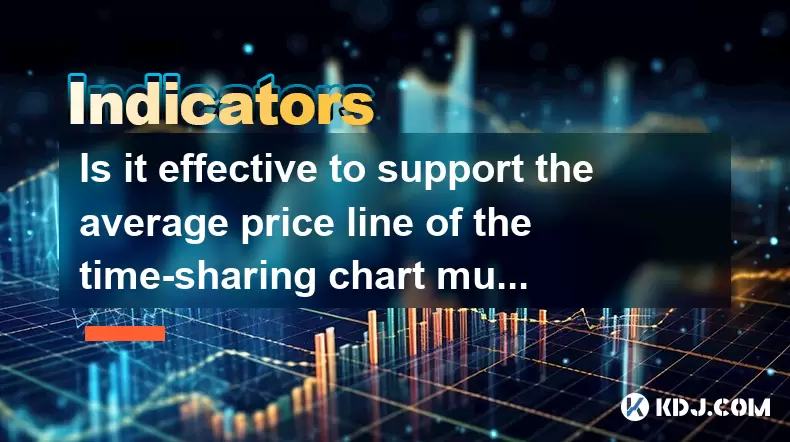
Is it effective to support the average price line of the time-sharing chart multiple times?
Jun 23,2025 at 01:36pm
Understanding the Average Price Line in Time-Sharing ChartsIn cryptocurrency trading, time-sharing charts refer to real-time price charts that display price movements over short intervals, often within a single trading day. Within these charts, the average price line, also known as the Volume Weighted Average Price (VWAP), is a commonly used technical i...
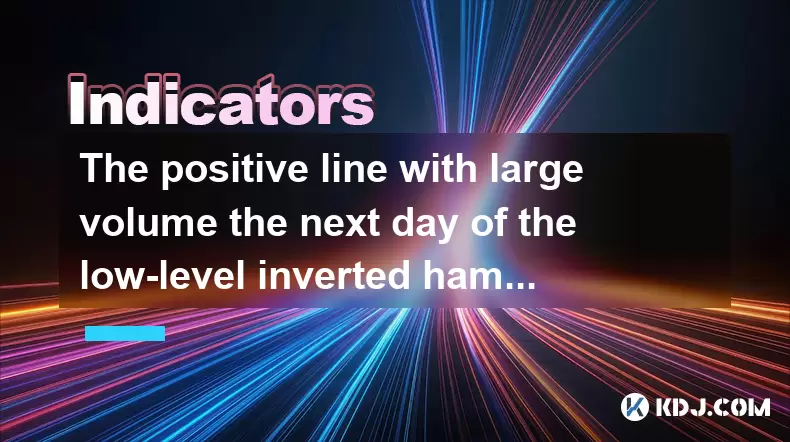
The positive line with large volume the next day of the low-level inverted hammer line confirms the reversal?
Jun 23,2025 at 01:21pm
Understanding the Low-Level Inverted Hammer LineThe inverted hammer line is a single candlestick pattern that typically appears at the end of a downtrend. It has a small real body near the bottom of the trading range and a long upper shadow, indicating that bulls attempted to push prices higher but were met with selling pressure. When this pattern forms...
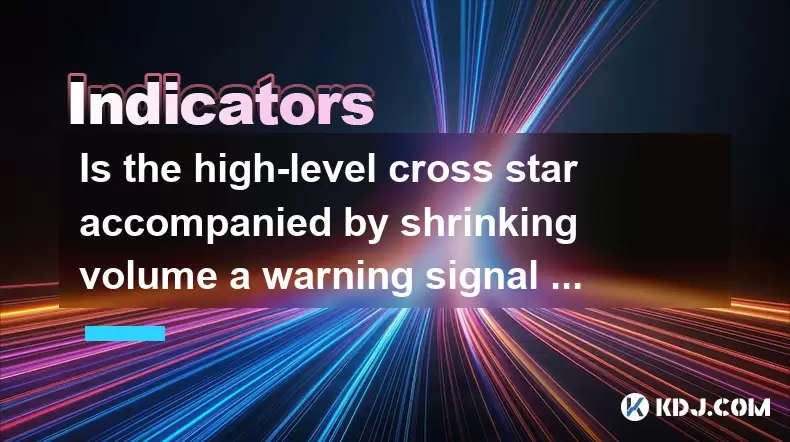
Is the high-level cross star accompanied by shrinking volume a warning signal of peaking?
Jun 23,2025 at 01:28pm
Understanding High-Level Cross Star PatternsIn the world of cryptocurrency trading, candlestick patterns are essential tools for technical analysis. One such pattern is the high-level cross star, which appears as a doji or near-doji candle at a significant resistance level. This pattern often indicates indecision in the market and can be interpreted as ...
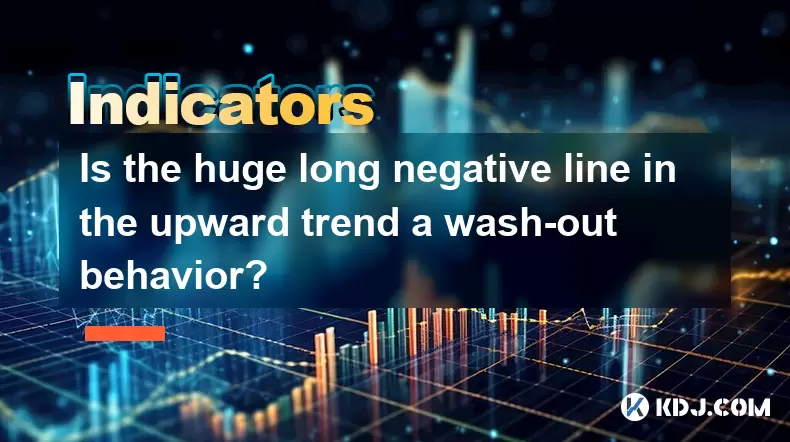
Is the huge long negative line in the upward trend a wash-out behavior?
Jun 23,2025 at 12:49pm
Understanding the Long Negative Candlestick in an Uprising TrendA long negative candlestick, often referred to as a long red or bearish candle, appearing during an upward trend can raise concerns among traders and investors. This pattern typically indicates a sudden and significant drop in price after a period of rising prices. It is often interpreted a...
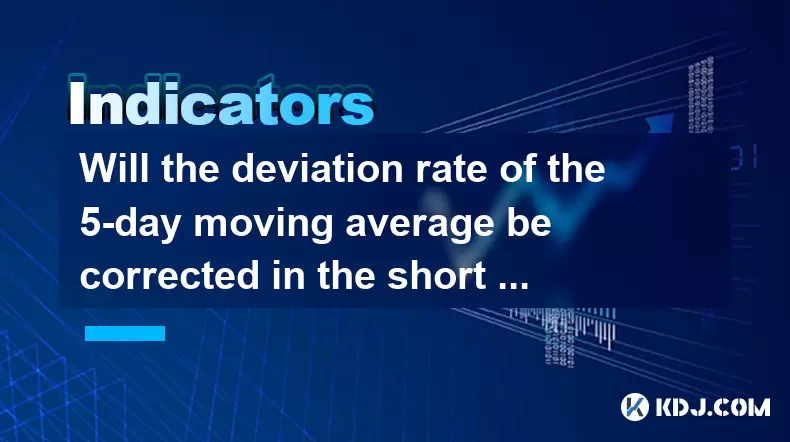
Will the deviation rate of the 5-day moving average be corrected in the short term if it is too large?
Jun 23,2025 at 02:07pm
Understanding the Deviation Rate of the 5-Day Moving AverageIn cryptocurrency trading, technical analysis plays a crucial role in evaluating price movements. One commonly used indicator is the 5-day moving average (MA), which calculates the average closing price over the past five days. The deviation rate refers to how far the current price or another m...

Can the EXPMA golden cross stand on the 5-day line at the same time?
Jun 23,2025 at 11:42am
Understanding the EXPMA Indicator in Cryptocurrency TradingThe Exponential Moving Average (EXPMA) is a popular technical analysis tool used by cryptocurrency traders to identify trends and potential reversal points. Unlike simple moving averages, the EXPMA gives more weight to recent price data, making it more responsive to current market conditions. In...

Is it effective to support the average price line of the time-sharing chart multiple times?
Jun 23,2025 at 01:36pm
Understanding the Average Price Line in Time-Sharing ChartsIn cryptocurrency trading, time-sharing charts refer to real-time price charts that display price movements over short intervals, often within a single trading day. Within these charts, the average price line, also known as the Volume Weighted Average Price (VWAP), is a commonly used technical i...

The positive line with large volume the next day of the low-level inverted hammer line confirms the reversal?
Jun 23,2025 at 01:21pm
Understanding the Low-Level Inverted Hammer LineThe inverted hammer line is a single candlestick pattern that typically appears at the end of a downtrend. It has a small real body near the bottom of the trading range and a long upper shadow, indicating that bulls attempted to push prices higher but were met with selling pressure. When this pattern forms...

Is the high-level cross star accompanied by shrinking volume a warning signal of peaking?
Jun 23,2025 at 01:28pm
Understanding High-Level Cross Star PatternsIn the world of cryptocurrency trading, candlestick patterns are essential tools for technical analysis. One such pattern is the high-level cross star, which appears as a doji or near-doji candle at a significant resistance level. This pattern often indicates indecision in the market and can be interpreted as ...

Is the huge long negative line in the upward trend a wash-out behavior?
Jun 23,2025 at 12:49pm
Understanding the Long Negative Candlestick in an Uprising TrendA long negative candlestick, often referred to as a long red or bearish candle, appearing during an upward trend can raise concerns among traders and investors. This pattern typically indicates a sudden and significant drop in price after a period of rising prices. It is often interpreted a...

Will the deviation rate of the 5-day moving average be corrected in the short term if it is too large?
Jun 23,2025 at 02:07pm
Understanding the Deviation Rate of the 5-Day Moving AverageIn cryptocurrency trading, technical analysis plays a crucial role in evaluating price movements. One commonly used indicator is the 5-day moving average (MA), which calculates the average closing price over the past five days. The deviation rate refers to how far the current price or another m...

Can the EXPMA golden cross stand on the 5-day line at the same time?
Jun 23,2025 at 11:42am
Understanding the EXPMA Indicator in Cryptocurrency TradingThe Exponential Moving Average (EXPMA) is a popular technical analysis tool used by cryptocurrency traders to identify trends and potential reversal points. Unlike simple moving averages, the EXPMA gives more weight to recent price data, making it more responsive to current market conditions. In...
See all articles

























































































